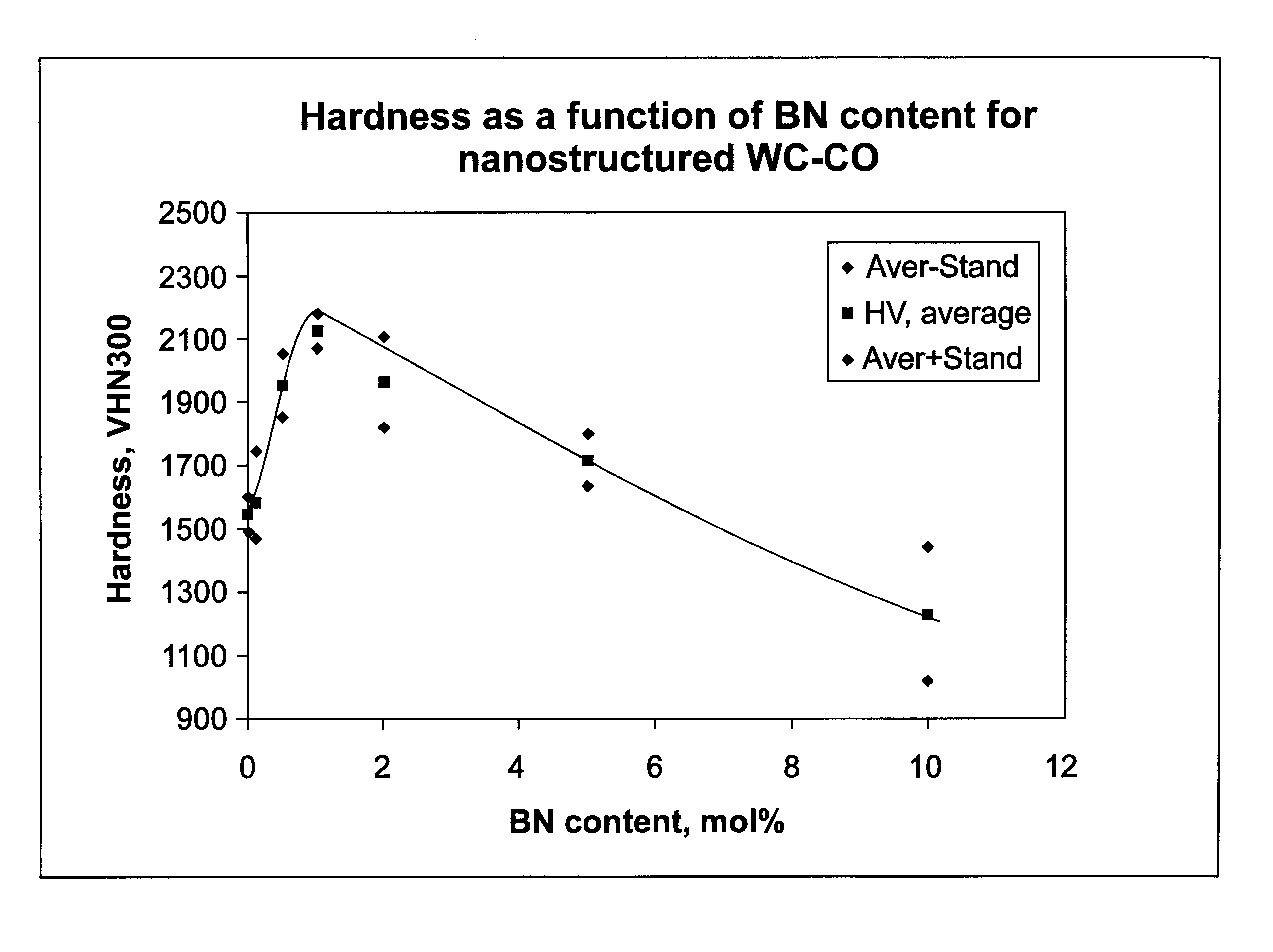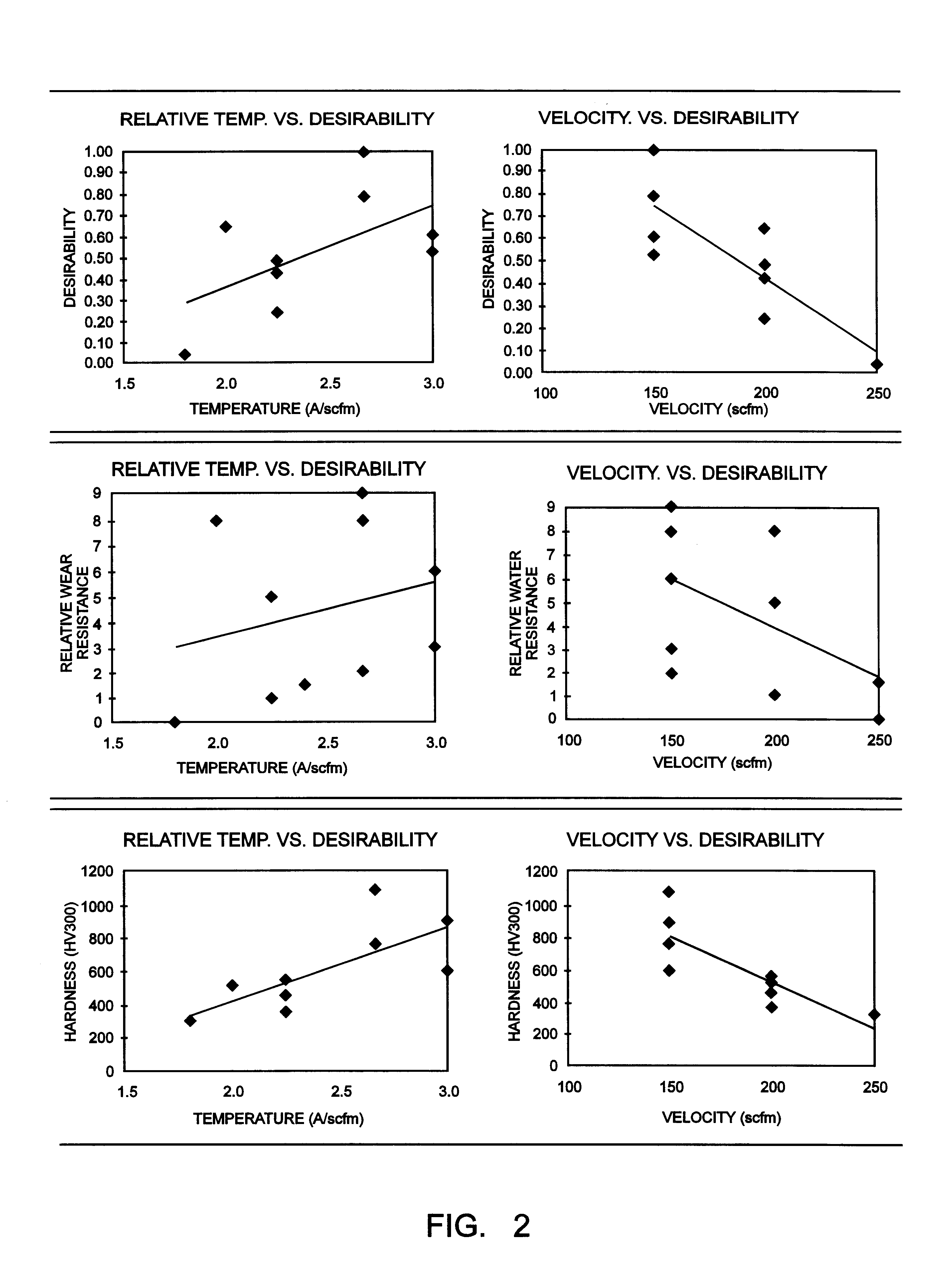Grain growth inhibitor for nanostructured materials
a nanostructured material and growth inhibitor technology, applied in the field of nanostructured material synthesis, can solve the problems of non-homogeneous bulk material properties, tungsten carbide grains growing rapidly to diameters of several microns, and the production of materials to undergo grain growth during sintering
- Summary
- Abstract
- Description
- Claims
- Application Information
AI Technical Summary
Problems solved by technology
Method used
Image
Examples
example 2
Incorporation of BN into Nanostructured Materials.
A known quantity of BN polymeric precursor synthesized as described in Example 1 was first dissolved in distilled, deionized water to make a nearly saturated solution. This solution was then combined with hollow shell nanostructured WC--Co (used as received from Nanodyne, Inc., New Brunswick, N.J.) and ball milled to produce a slurry. The milled slurry was then dried in an oven at about 100.degree. C. to remove water. A number of samples were prepared wherein the molar percent of boron in the BN was 0.1%, 0.25%, 0.5%, 1%, 2%, 5%, and 10%. Converted to weight percent (wt. %), these values correspond to 0.006 wt. %, 0.015 wt. %, 0.03 wt. %, 0.06 wt.%, 0.1 19 wt. %, 0.293 wt. %, and 0.569 wt. % of boron in BN, respectively.
example 3
Sintering of Precursor / Nanostructured Material Intermediates
The milled samples of Example 2 (as well as a sample of WC--Co powder as received) were sintered by first pressing about 10 g of each sample into 1.5 cm discs and then heat treating each sample at 1400.degree. C. under flowing argon gas using a heating rate of 10.degree. C. / minute and a dwell time of 0.5 hour. After heat treatment, the resultant pellets had shrunk to approximately half of their original sizes, and had densified to varying degrees, up to about 99% density.
The Vicker's hardness values (VHN 300 g ) of these samples are shown graphically in FIG. 1. The average hardness of the sample having 0.0 wt. % of boron is about 2135, with the highest values up to 2228. All of these samples are reasonably tough. For example, when measuring conventional WC--Co (which has a VHN of 1200-1600), cracks at the corners of each diamond indentation always appear. No visible cracks at the indents in the nanostructured WC--Co materia...
example 4
Solid Diffusion of Precursor into Grain Boundaries (Argon Treatment)
The milled samples of Example 2 having 1 molar % and 10 molar % B in BN were heat treated under argon at 600.degree. C. for 5 hours. The treated powders were then pressed into 1.5 cm pellets, and heat treated at 1400.degree. C. under flowing argon gas using a heating rate of 10.degree. C. / minute and a dwell time of 0.5 hour. After heat treatment, the resultant pellets had shrunk to approximately half of their original sizes, and had densified to varying degrees up to about 99% density.
PUM
| Property | Measurement | Unit |
|---|---|---|
| thickness | aaaaa | aaaaa |
| diameter | aaaaa | aaaaa |
| temperatures | aaaaa | aaaaa |
Abstract
Description
Claims
Application Information
 Login to View More
Login to View More - R&D
- Intellectual Property
- Life Sciences
- Materials
- Tech Scout
- Unparalleled Data Quality
- Higher Quality Content
- 60% Fewer Hallucinations
Browse by: Latest US Patents, China's latest patents, Technical Efficacy Thesaurus, Application Domain, Technology Topic, Popular Technical Reports.
© 2025 PatSnap. All rights reserved.Legal|Privacy policy|Modern Slavery Act Transparency Statement|Sitemap|About US| Contact US: help@patsnap.com



